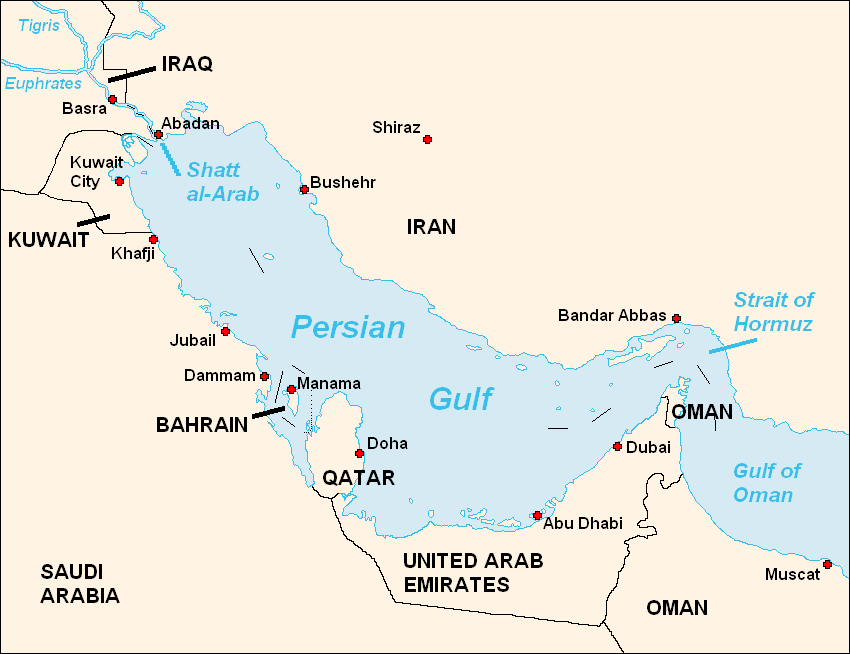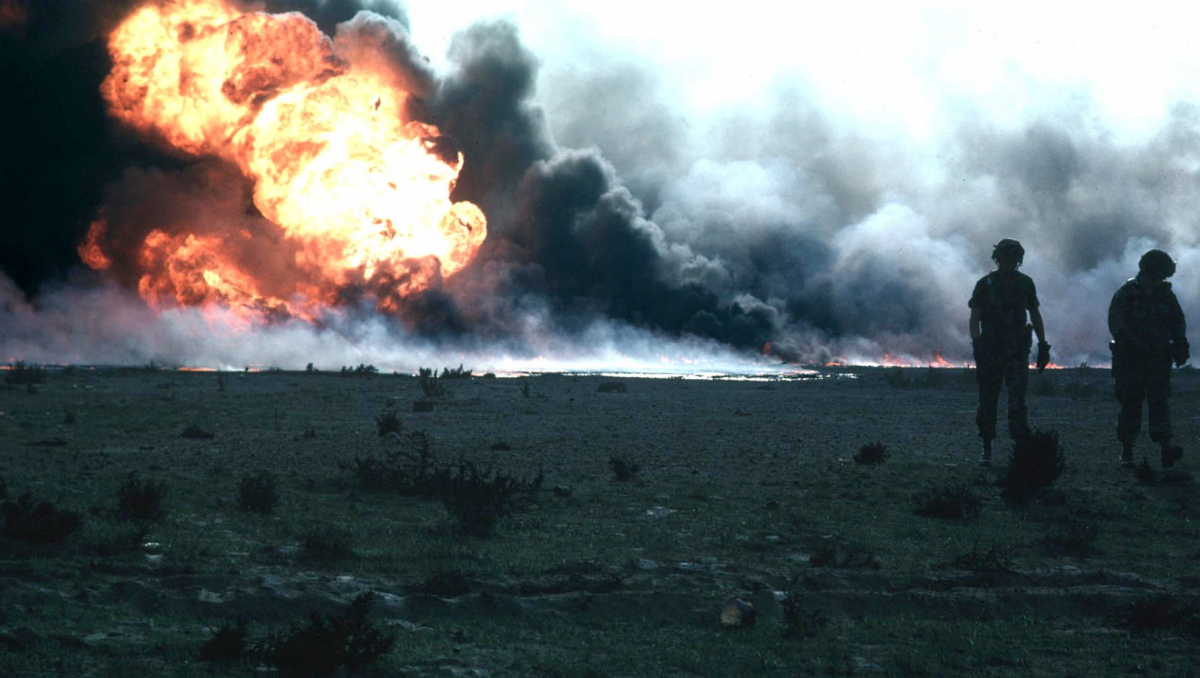Michael Quentin Morton’s Empires and Anarchies: A History of Oil in the Middle East, serves as a concise, easy-to-read introduction to modern Middle Eastern history through the lens of the region’s largest industry: oil.
Before taking up writing, Morton served as a lawyer for 30 years, and since 2006 has published several books and articles on the Middle East and oil. He has an intimate relationship with the oil industry, having grown up in Qatar, Bahrain, and Abu Dhabi in the 1950s and 60s, where his father worked as an exploration geologist. Morton's narrative focuses on the people and businesses involved in the discovery and production of this resource, asserting that the history of oil is as much about social issues as economic ones.

Empires and Anarchies argues that, “oil creates empires and anarchies in the same way that wealth, power and greed have always done” (14). The book is organized into four parts, the first three of which are geographically rooted in specific oil-rich areas: Iran, Iraq, and Arabia and the Gulf. Each of these sections illustrates the historical developments beginning with European exploration up to 1971, when all Middle Eastern states had obtained independence.
Morton tracks major individuals, companies, and governments taking part in the search for commercially viable oil sources as well as the negotiation of oil concessions between local powers and major oil companies (oil majors) such as Anglo-Iranian (later BP), Royal Dutch-Shell, the Standard Oil off-shoots, etc.
Throughout these sections, Morton shows oil to be an integral part not only of Middle Eastern economies, but also of political and social life. He describes how oil-reinforced patrimonial structures, where power and wealth flow from a single individual or institution such as the oil majors or a local ruler, create a more disparaging social structure.
The oil industry was one in which jobs were given primarily to Europeans and wealth became concentrated among ruling elites, while larger populations saw minimal benefits from the development of oil. Morton often decries this stratification of Middle Eastern societies as well as the segregation of the European workers from local populations, citing it as a cause for unrest in the region.
These issues of inequality, coupled with a growing anti-western sentiment, political suppression, and the implications of events such as the Suez Crisis of 1956 and the signing of the Baghdad Pact of 1955 contributed to the delegitimization of governments across the region, particularly in Iraq, which was removed by a coup in 1958 (111). Morton effectively describes how oil contributed to other social and political realities in the region. Had Morton made these socio-political aspects of oil his central argument, Empires and Anarchies would be much more persuasive and engaging.
Part four of this work, “The Middle East,” covers a multitude of problems associated with oil in Middle Eastern societies: the decline of the oil majors and the rise of independent oil companies; the rivalry between Saudi Arabia and Iran; Saddam Hussein’s wars and their impact on the oil market; and the present state of the oil industry. In the first chapter, “Voices in the Dark,” he describes oil as “an engine of social unrest,” and as an obstacle to political reform, because “there is little appetite” for political reform while oil revenues keep flowing (175-176). The Arab Spring, he argues, was the latest eruption of social unrest against a status quo of inequality and the governmental “corruption and waste” fueled by a profitable oil market (182).

While examining the Saddam Hussein regime and the three wars that occurred during his rule, Morton argues that many of the actions taken in these conflicts were oil-driven. Here, however, the analysis becomes reductionist. It overemphasizes the role of oil while omitting other crucial aspects of these conflicts, such as Iraq’s need for greater access to the Persian Gulf through the Shatt al-Arab and the U.S.’s desire to promote its regional interests in a post-Soviet era. Without these details, Morton’s description of these events is incomplete, and his argument less substantial.
Morton concludes his book by pointing out the various problems currently affecting these oil producing countries including limited reserves, increased domestic consumption, the looming fear of “peak oil,” and the dominance of oil and gas in many Middle Eastern economies. These issues serve as a reminder that the history of oil is not complete, and that its effects will be felt for generations to come. Foreign intervention, government domination, and economic and political stratification are all central aspects of the Middle East in the ‘Age of Oil,’ but these problems troubled the region long before its discovery.
Economic, social, and political inequalities were certainly intensified by the development of oil, but they did not originate from it. Morton ends by stating that he sees little hope in the region, as this lucrative commodity has brought wealth to the region which, in his view, has done more to intensify than to remedy existing problems.
Throughout Empires and Anarchies, Morton describes oil wealth as a corrupting power, but he understates the impact of European colonialism in this history of oil in the Middle East. The administrative approaches of European politicians and businessmen created an atmosphere of inequality that did not benefit local communities, contributing to anti-Western sentiment that later defined the region’s nationalist movements. While Morton points to some of these effects, he minimizes the impact “divide and rule” strategies had on Middle Eastern populations.
In one example, Morton writes that strikes in Iran erupted over pay and working conditions and that, in response, British officials encouraged Arab workers to organize and countermarch. However, “the company was not overly distracted from the main business of extracting and exporting oil” (50). Such examples of divisive practices should have played a larger role in Morton’s narrative because the anti-Western nationalist movements were spurred by feelings of indignation, while the post-independence governments adopted many of the same divisive policies in order to maintain social control.
Additionally, Morton’s main thesis is unclear as he does not explain his intended meaning of empires, and waits until the 10th chapter to discuss anarchies. The term “anarchy” appears in the narrative two times (14, 175), in reference to the so-called Islamic State and its black market oil production. But the idea’s obscurity and absence from the book as a whole raises new questions. What does anarchy have to do with oil? How does oil contribute to or even create it? While the various marks of empire pervade the book, these questions about “anarchy” remain unanswered.
In the end, while ‘empires and anarchies’ can be found throughout the region today, Morton’s work does not entirely show how this industry has created either. Morton often contradicts himself by stating that oil was not a driving force behind major events or the decisions of individual explorers and politicians (50, 79, 222). While his narrative presents an essential aspect of Middle Eastern history, ill-defined terms and concepts restrict this book to serving only as an introduction to the history of the Middle East and the politics of oil.
